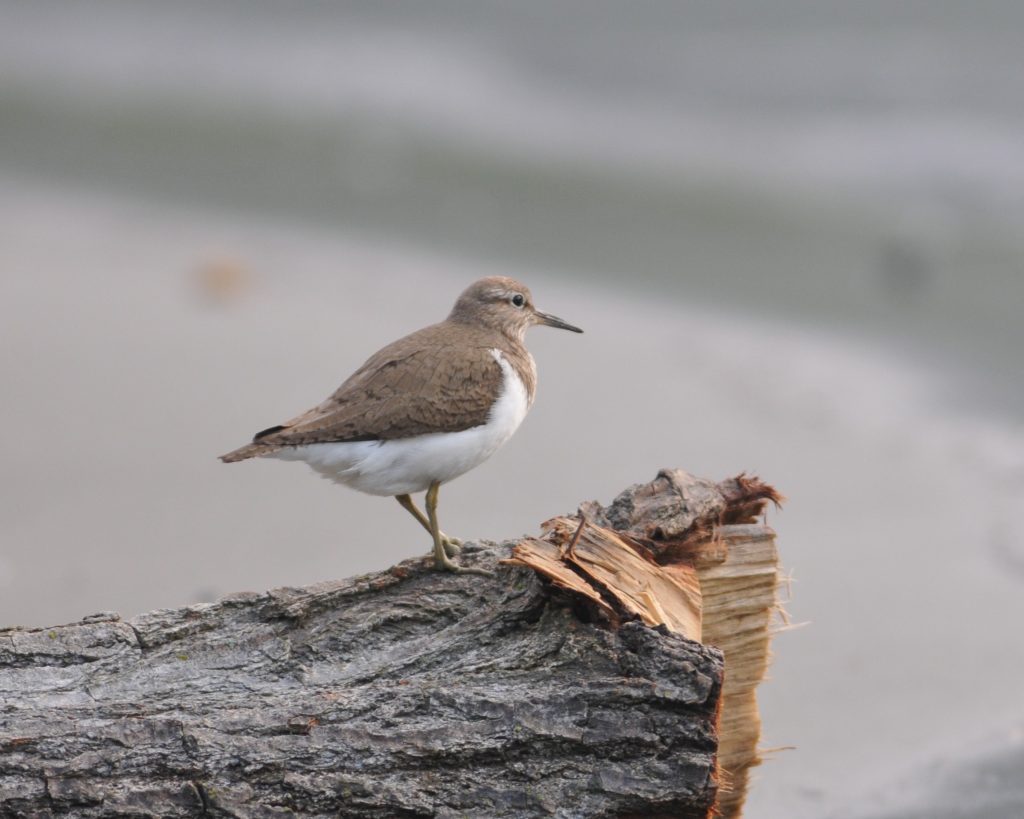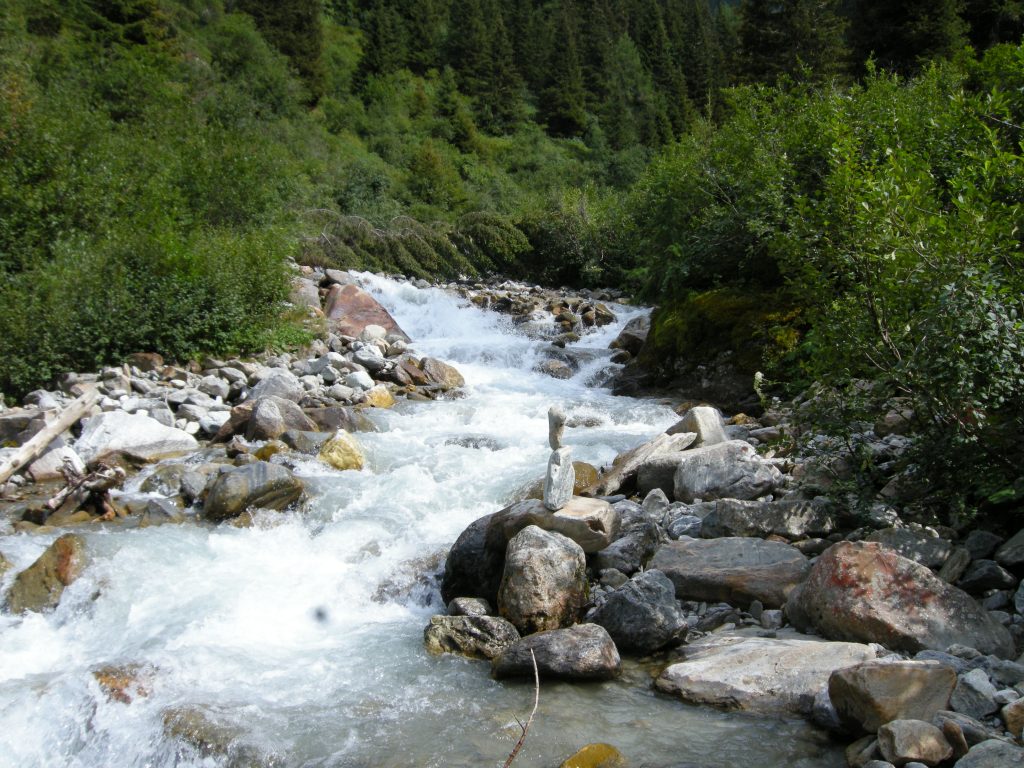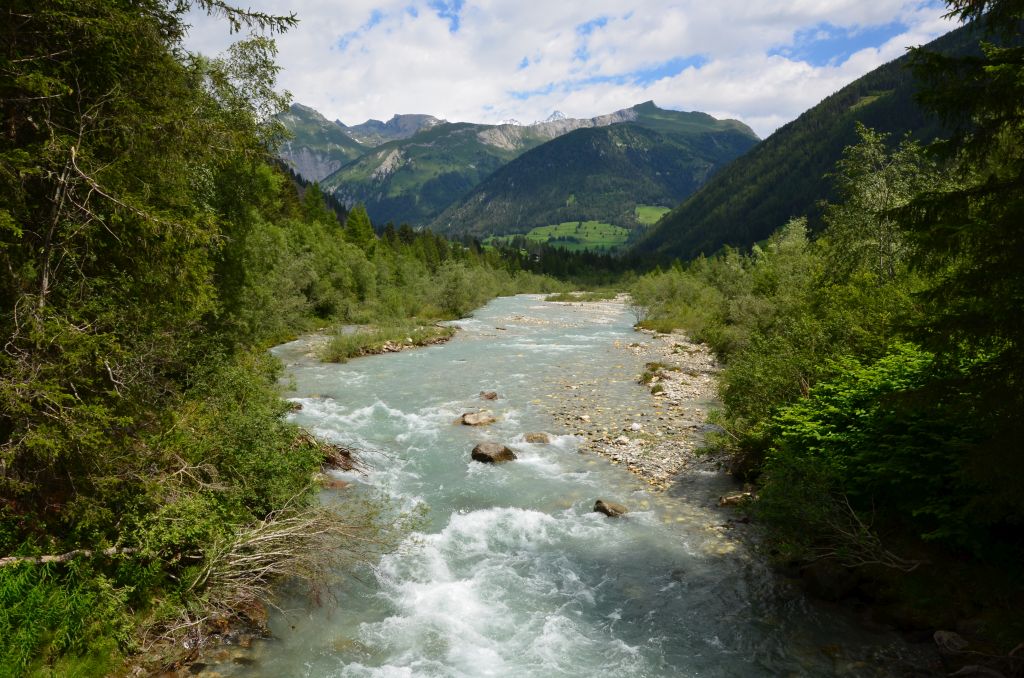Nature conservation is at a tipping point on East Tyrol‘s glacial rivers
The lifelines of East Tyrol are threatened because these unique ecosystems are to be exploited. Politicians have shown no action as one power plant after another is planned and pushed through. A WWF report shows how political arbitrariness, non-transparent deals, profit maximization and a questionable handling of legal regulations are putting Tyrol’s natural heritage at risk.
A report by Marianne Götsch, campaigner for the protection of the Isel of WWF Austria
german version here
Background
The Isel and its tributaries in East Tyrol form a water network which is unique in the Eastern Alps. Thanks to far-sighted water management in the 1960s, the main river Isel and its tributaries have, until now,been largely preserved in a near-natural stateor have been carefully managed . The Isel itself still has wide gravel banks and floodplain forests. The side streams Kalserbach, Tauernbach and Schwarzach enchant with their picturesque clean water, waterfalls and gorges. They are not only the most important lifelines of the Hohe Tauern National Park, but also of East Tyrol as a whole.

Natural importance
Along with the Tyrolean Lech and the Tagliamento in Upper Italy, the area is one of the last three in the Eastern Alps where the German tamarisk still occurs in high numbers. Everywhere else, this endangered and strictly protected shrub has already disappeared except for scattered single occurrences. In addition, there are other protected and endangered animal and plant species that are at home in the natural river landscape of the Isel system. These include fish species such as the bullhead, huchen and grayling, bird species such as the common sandpiper and the little ringed plover, and bats such as the lesser horseshoe, which is endangered throughout Europe. There is little doubt of the international importance this area holds for nature conservation. The wild river system has national park qualities.

EU protection was denied for a long time
It was only four years ago that the great ecological value was recognized, and a Natura 2000 site was designated. The fifteen-year refusal of the Tyrolean government to include the area in the European protected area system Natura 2000 is completely incomprehensible. There are more than 17 protected species according to the EU nature protection directive in the Isel catchment1 as well as several species that are mentioned on the red lists of Austria and Tyrol and are listed in the Tyrolean nature protection regulation. It has been scientifically proven for decades that the Isel area is one of the most important Austrian freshwater ecosystems2,3. In 1998, the Austrian Ministry of Agriculture, the Ministry of Environment and WWF Austria designated the entire Isel, the Kalserbach and the Schwarzach as „river sanctuaries“. The federal ministers signed to confirm these rivers enjoy national importance and therefore should remain untouched.

Incomplete Natura 2000 protection
When it became clear around 2010 that several hydropower plants were to be built in the Isel and it’s tributaries, resistance arose from local citizens‘ initiatives and environmental associations. Finally, the European Union called upon Austria to designate the Isel area as a Natura 2000 site. Resistance to hydroelectric power plant projects has a long tradition in East Tyrol. For example, a gigantic reservoir in the Kalser Dorfertal valley was prevented at the beginning of the 1980s, mainly due to pressure from the people of Kals and East Tyrol.
Finally the Tyrolean government reacted and designated the Isel and parts of its side waters a protected area. However, this designation was not based on scientific criteria, but followed a flawed and politically motivated logic: The Isel was completely designated, but at the tributaries Tauernbach, Kalserbach and Schwarzach where power plants were already planned were simply left out. This has also led to discussions about the „Kalser Deal“ in the Tyrolean provincial parliament: according to this, the approval of the protected area is said to have been linked to political promises4.
East Tyrol‘s glacial rivers in danger
Power plants threaten the Isel
More than seven power plants are planned, in the approval process, or already under construction in the Isel river system. The provincial government has so far claimed these would have no impact on the Isel river. Expert reports, on the other hand, make it clear that if the sediment- and bed load and water balance of the side streams is altered by the hydropower plants, the Isel will be changed in the long term and protected species and habitats will be endangered5. The sensitive ecosystems surrounding wild river landscapes depend on intact river dynamics and a continuous network of a main river and smaller tributaries. For this reason, the WWF has repeatedly called for an overall study to examine the cumulative effect of all construction projects and existing power plants on the health of the Isel river system. The Tyrolean government still refuses to conduct such a study. Apparently, there is no political interest in preventing potential dangers for the river basin and thus for the newly protected area.

Disregard of state strategies
In 2011, the Tyrolean government took a strategic approach to the expansion of hydropower with the help of a planning instrument. The Hydropower Criteria Catalogue intends to help identify the „best power plant projects in the right place“. This is done by examining a power plant project following criteria from the fields of energy management, water management, regional planning, water ecology and nature conservation. Based on this, a recommendation is then made on whether to pursue a power plant project. According to the government resolution, this catalogue of criteria is to be used as a binding basis for the official approval of hydropower plants6. However in practice this state strategy is regularly disregarded: Despite negative assessments, projects are always waved through7. Under the pretext of the alleged public interest, projects which serve purely private interests and come at the expense of people and nature are approved.

Political arbitrariness in the Lesach Valley
Particularly scandalous is the approval of the Lesachbach-Oberstufe power plant. Made worse because of the power plants location directly at the gates of the Hohe Tauern National Park, in the municipality of Kals am Großglockner. A few hundred meters beyond the strictly protected national park, the operators have located the power plant in a stretch of water that the provincial government has documented as „the last river section of its kind in East Tyrol and particularly rare for all of Tyrol.“ In addition, the affected river stretch is still in a very good ecological status. Such unimpaired rivers have become rare across Europe and are not to be deteriorated by law. Planning the small powerplant in this exact location destroyed the integrity of this stretch of the river. Therefore, the examination by the Hydropower Criteria Catalogue of the province Tyrol has shown in advance that the project was recommended neither for further pursuit, nor for approval. Quote:
„The [only conditionally attractive, rather critical] assessments in the remaining subject areas do not seem to relativize this deficit [of the very critical assessment in the subject area of nature conservation].8„
Despite this, Josef Geisler, the responsible member of the provincial government, disregarded expert assessments and pushed through a permit. In his written response to an inquiry by Liste Fritz in the Tyrolean council, he states that he personally has a good impression of the project and sees public interest in it,
„therefore I have asked the responsible department of the office to prepare and process an approving notice.9„
Who is Josef Geisler
Josef Geisler is the provincial councillor responsible for water, energy and nature conservation matters in power plant matters, agriculture, forestry, hunting matters as well as disaster control. A huge department. At the same time, he is also chairman of the farmers‘ association (Bauernbund). The Lesachbach-Oberstufe power plant project is located in the municipality of Kals am Großglockner, whose mayor is also a member of the farmers‘ association, and the project itself is run by the agricultural community (i.e. a union of local farmers). In this respect, there are several serious conflicts of interest.

Will the Kalserbach river become the next nature crime scene?
The municipality of Kals am Großglockner has still not seen the end of power plant construction. Although there are already several hydropower plants in the municipality’s territory, the municipality wants to build the next hydroelectric power plant in a sensitive glacial stream. The Haslach-Kalserbach power plant project is expected to cost about 30 million Euros (for a community of around 1,100 inhabitants) and have a capacity of around 8 megawatts. For this small gain in electricity, the municipality will have to incur heavy debts. Furthermore, the planned power plant is located at a site endangered by landslides, floods, and avalanches. The water intake would be located in the immediate mouth of an avalanche line, from which annual avalanche events into the stream are possible. Eight further avalanche lines flow into the downstream diversion area. The pipeline, through which the diverted water would flow to the powerhouse10, would cross under the torrent four times. At the same time, the project is in an area where, after huge windfalls, the protective function of the forest is severely impaired in the long term and the potential for nature hazards is especially high11. The resulting increased risk of damage entails unplanned, additional costs for the municipality.
The pursuit of profit through power plant construction is also opposed by the fact that the Kalserbach is one of the most important hotspots in the region regarding subjects of protection Europewide. In addition, the evaluation according to the Hydropower Criteria Catalogue of the province Tyrol was negative12. A positive evaluation by the authorities in terms of nature conservation would therefore be a tragedy. Even with expensive compensatory measures, the expected damage cannot be compensated. The only way in which this nature-destructive project could nevertheless be approved would be by means of political instruction by the responsible provincial councillor Josef Geisler. After the Lesachbach case, will the Kalserbach also become a victim of political influence? The risk of this remains high if political intervention in favour of profit maximization continues.

Isel Manifesto & a Complaint to the European Commission
The events in East Tyrol have mobilized numerous concerned citizens and local initiatives as well as national and international environmental associations, kayak associations and fisheries organizations. forty-three organizations as well as renowned voices from the scientific community have made it clear in a manifesto for the protection of the East Tyrolean glacial rivers that there is no place for further power plants in the Isel area. This initiative calls for the designation of the entire river system – i.e. the entire Isel and all side streams – as a nature reserve13. In addition, WWF Austria has filed a complaint with the EU regarding the legally questionable procedure of applying EU directives when assessing impacts.
EU-legal assessment in Tyrol
The WWF has filed a complaint with national courts and the EU against the procedure of the Tyrolean state government because Tyrol does not comply with the legal provisions required for the mandatory Environmental Impact Assessment from WWF’s point of view. For example, the province only examines the impact of the power plants on species and habitats, which it has reported itself to Brussels, but not those that actually occur in the area. It is also inadmissible that the effects of the power plants are only examined for animal and plant species that are located in the small protected area – which was inadequately designated by the state government because of political motives.

Putting the entire Isel system under protection
The signatories of the Isel Manifesto call on the Tyrolean government to reject all further power plant projects and designate a complete protection area. This would prohibit all further destruction of the Isel and its tributaries. Furthermore, the river should be re-naturalised to increase the attractiveness of the area for locals and tourists. There are already good examples of this in the Lechtal (LIFE projects, Lechweg) as well as in East Tyrol itself (Iseltrail). The preservation of a healthy ecosystem has brought added value to the region, which is proven with the Iseltrail.
To enable positive development, the entire Isel system must be comprehensively protected from further construction. Political directives to the disadvantage of people and nature must come to an end immediately. The Haslach-Kalserbach power plant, which is currently in the process of being built, will become an indicator for determining whether Tyrolean regional politics will continue to focus on profit maximization for the benefit of a few or preserve a unique natural heritage for future generations.

Further information:
DIin Marianne Götsch
Campaigner for the protection of the Isel
WWF Austria
Tel: +4367683488309
Email: marianne.goetsch@wwf.at
Downloads
Sources
1. Grabherr, G. Exemplarischer Standard-Datenbogen für Natura 2000 – Gletscherflusssystem Isel – Öffentliches Wassergut der Isel und ihrer Zubringer Schwarzach, Tauernbach und Kalserbach in Osttirol. (Universität für Bodenkultur, 2013).
2. Jungwirth, M. & Muhar, S. Zur Ausweisung der Isel als Natura 2000 Gebiet: Fachliche Stellungnahme aus gewässerökologischer Sicht. (Universität für Bodenkultur, 2002).
3. Retter, W. Der „Gletscherfluss“ Isel / Osttirol – seine Bedeutung im Naturhaushalt und seine Bedrohung durch Kraftwerksplanungen. Jahrb. des Vereins zum Schutz der Bergwelt 55–72 (2007).
4. Haselwanter-Schneider, A. Schriftliche Landtagsanfrage der Liste FRITZ: Nominierte Natura 2000-Gebiete in Osttirol: Die Ausnahme am Kalserbach heizt die Gerüchteküche an – Wie schaut der „Kalser Deal“ im Detail aus? (2015).
5. Suske, W. Gutachten Beurteilung der Beschwerde zu ‘KW Schwarzach – Erweiterung 2. Maschinensatz’. 13 (2020).
6. Amt der Tiroler Landesregierung. Kriterienkatalog Wasserkraft in Tirol – Kriterien für die weitere Nutzung der Wasserkraft in Tirol. (2011).
7. Neubarth, J. Anwendung „Kriterienkatalog Wasserkraft in Tirol“ als strategisches Planungsinstrument zum Ausbau der Wasserkraft. e3 Consult GmbH (2020).
8. Amt der Tiroler Landesregierung. Wasserkraftanlage Lesachbach – Oberstufe; Beurteilung nach dem Kriterienkatalog. Geschäftszahl LADStv-823-W/4-2015 (2015).
9. Geisler, J. Beantwortung der schriftliche Anfrage 441/2018 betreffend: ‘Kraftwerk am Lesachbach in Kals: Hat es zum naturschutzrechtlichen Bescheid eine Weisung gegeben?’ https://assets.dolomitenstadt.at/wp-content/uploads/2018/12/Anfragebeantwortung-Josef-Geisler.pdf (2018).
10. Wildbach- und Lawinenverbauung Gebietsbauleitung Osttirol. Wasserkraftanlage Haslach am Kalserbach – wasser- und forstrechtliches Verfahren – Stellungnahme. 4 (2011).
11. Verein der Diplomingenieure der Wildbach und Lawinenverbauung Österreichs. Osttirol und Kärnten Studienreise. Zeitschrift für Wildbach-, Lawinen-, Erosions- und Steinschlagschutz (2019).
12. Ruggenthaler, M. Kriterienkatalog zeigt Zähne. Kleine Zeitung 30 http://www.wasser-osttirol.at/media/klz_kritkat_kalserb.pdf (2011).
13. WWF Österreich & Verein Erholungslandschaft Osttirol. Manifest zum Schutz der Osttiroler Lebensadern. Flüsse voller Leben https://www.fluessevollerleben.at/manifest-zum-schutz-der-osttiroler-lebensadern/ (2020).


